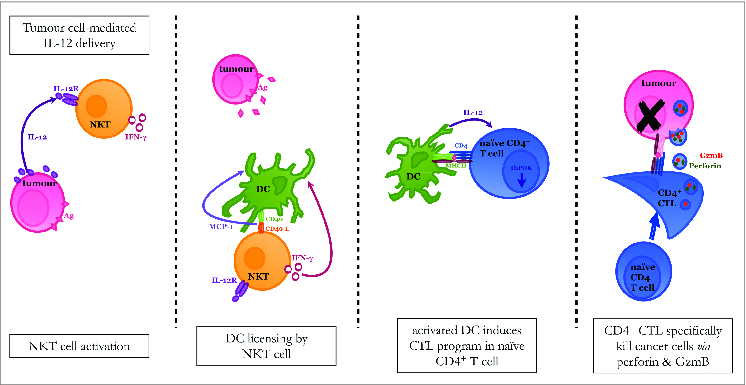Figures & data
Figure 1. Proposed model for induction of CD4+ CTL in response to cytokine therapy. NKT cells are able to respond to IL-12 produced by the leukemia cell because they constitutively express IL-12 receptor. This signal induces IFNγ production by the NKT cell, which then acts on DCs to increase their expression of CD40. DCs and NKT cells reciprocally activate each other by interacting through CD40/CD40-L and MCP-1 is produced as a consequence of this interaction. The DC population matures and enhances its Ag-presentation capacity so that it can ultimately provide all of the necessary signals to induce a CD4+ T cell response. The CD4+ T cell reduces its expression of the transcription factor ThPOK, which normally suppresses the cytotoxic program, and becomes a CTL. The fully armed CD4+ CTL then kills leukemia target cells using the cytolytic granules perforin and GzmB as one mechanism of action.

